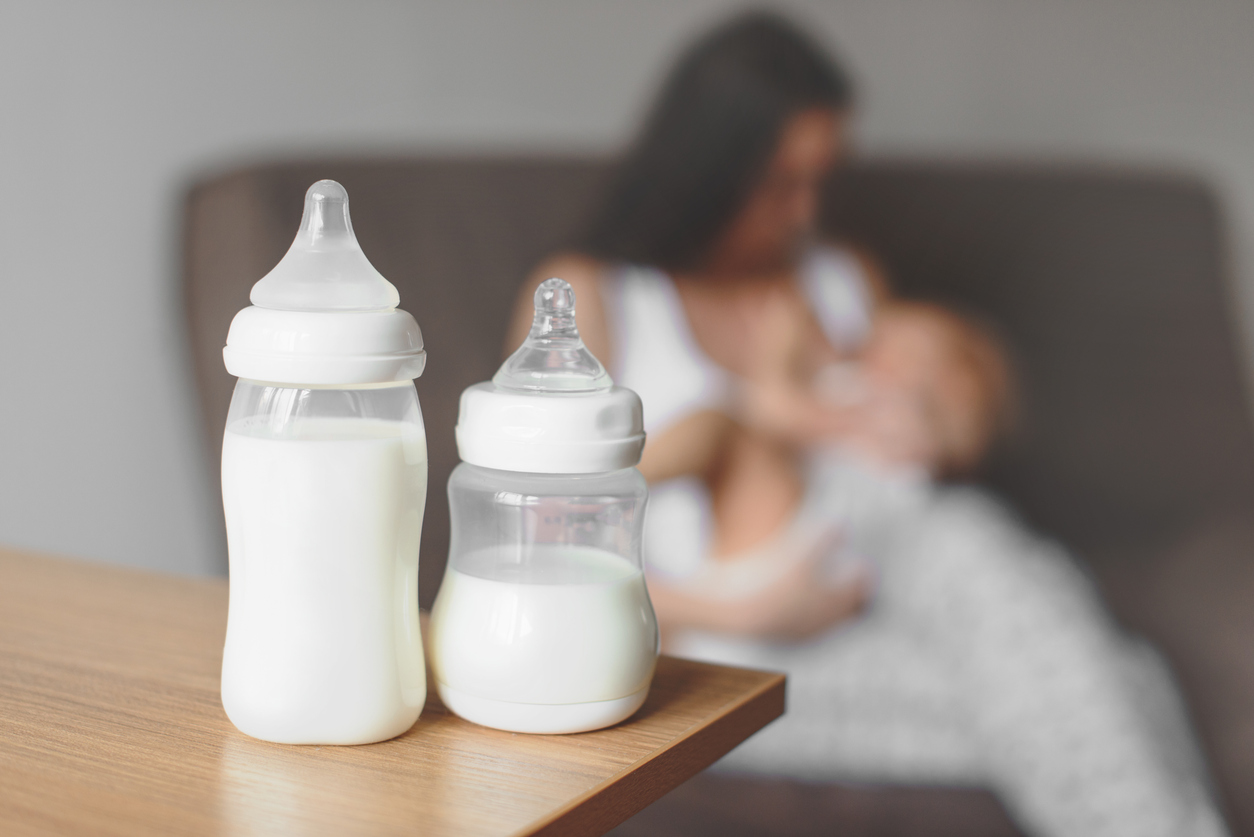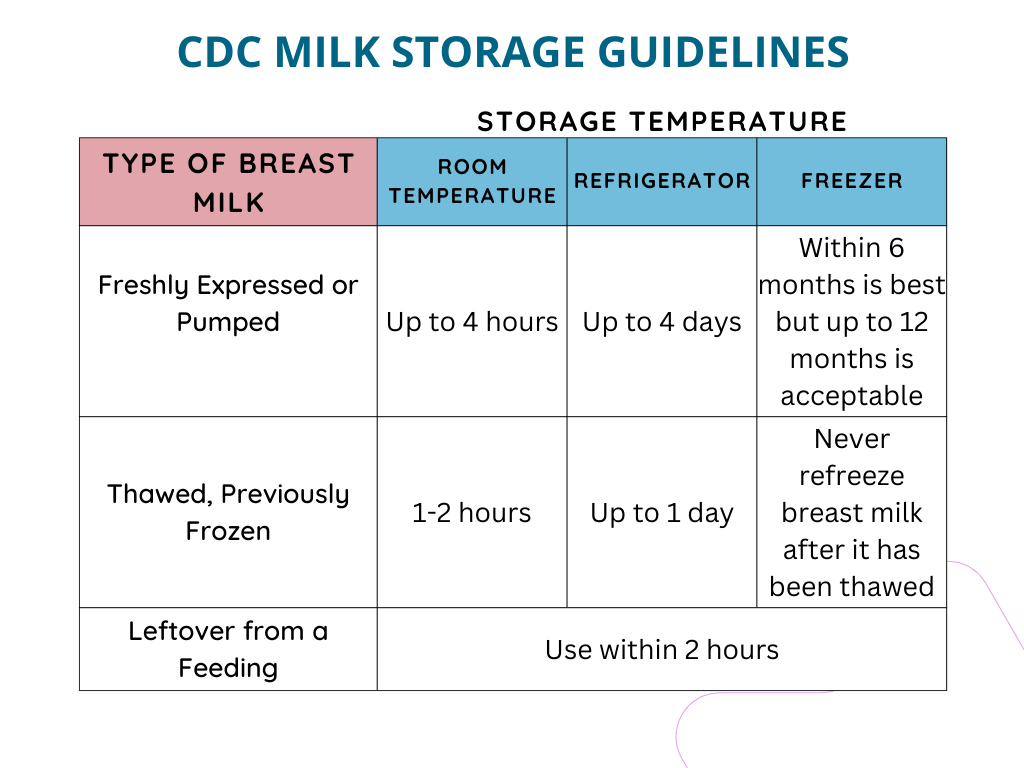Guide to Breast Milk Storage

The process of storing breast milk can feel daunting as a new mom or surrogate mother, especially when trying to maintain and increase milk supply. Often referred to as “liquid gold,” breast milk is packed with essential nutrients and immune-boosting properties. Proper storage is crucial to preserving its quality and safety. Unfortunately, many women receive limited guidance on pumping and breast milk storage in the hospital, leaving them to navigate these challenges on their own. This guide covers everything you need to know, including when to start storing breast milk, the best storage bags, safety tips, and how to store and ship milk safely while ensuring you maintain and increase your milk supply.
Unfortunately, many women are given very little information about pumping and breast milk storage at the hospital, which means you’re left to navigate the complexities on your own. In this guide, we provide everything you need to know about storing breast milk in a simple, easy-to-consume format. Below, we’ll explore:
- How to Maintain and Increase Milk Supply
- When to Start Storing Breast Milk
- Best Breast Milk Storage Bags
- Safety Tips for Expressing Milk
- How to Store Breast Milk after Pumping
- How Long Can You Freeze or Store Breast Milk in the Refrigerator
- Tips for Breast Milk Storage While Traveling
- What to Do with Stored Breast Milk You No Longer Need
- Introduction to How to Safely Ship Breast Milk
How to Maintain and Increase Milk Supply
To effectively maintain and increase milk supply while pumping breast milk, it’s important to establish a consistent pumping schedule that mimics a baby’s natural feeding patterns, typically every 2-3 hours. Ensuring proper hydration and a balanced diet rich in nutrients supports your body in producing more milk. Using a high-quality breast pump with correctly fitted flanges can also enhance efficiency and comfort, aiding in how to maintain and increase milk supply. Additionally, incorporating practices like breast massages before and during pumping sessions and reducing stress through relaxation techniques can significantly contribute to maintaining and increasing your milk supply over time.
When to Start Storing Breast Milk
If you’re anticipating a return to work, planning a trip, shipping breast milk to your intended family as their surrogate, or donating breast milk, you’ll want to start building a supply of breast milk. The timing at which you start depends on you and your situation.
Surrogate mothers who decide to pump often do so soon after giving birth, before their supply has a chance to dry up, while new moms may wait until closer to their return-to-work date.
For many lactating women, nursing and pumping, it can be challenging to build up a supply of breast milk to store for later.
The Bump offers a few recommendations to increase your supply and start creating a stash of stored breast milk. They recommend:
- Pumping three times a day.
- Expressing milk at the same time each day to encourage your body to make more milk.
- Massaging your breasts before pumping to stimulate milk glands so milk flows more easily.
- Trying to pump for 8 to 12 minutes per session.
Learn more tips and strategies for breastfeeding and pumping from Lactation Expert and founder of Cookies, Then Milk Nikki Bredeson on our podcast.
Best Breast Milk Storage Bags
There are a few features to look for as you shop for breast milk storage bags:
- BPA-free, phthalate-free, and food-grade
- Double-zipper or leak-proof for durability
- Pre-sterilized
- Includes measurement markings
- Easy to label
- Can attach directly to your breast pump so you don’t have to transfer it from one container to the next
Additionally, consider gadgets like Freeze It Flat™ from Mamaway, which help you freeze milk completely flat to maximize space in your freezer and shipping containers, or Milkify to freeze-dry your breast milk for a longer shelf life.
Some brands we recommend include:
Medela
Lansinoh
Ameda
Dr. Brown’s
Check out VeryWell Family’s list of best breast milk storage bags.
Watch our How To Pump, Ship and Donate Breast Milk Surrogacy Tutorial with Lactation Expert Lenna Gregory
Safety Tips for Expressing Milk
Before pumping or nursing, remember to:
- Wash your hands
- Use clean pumping equipment and pump parts (never buy used!)
- Find a clean room to express milk free of environmental contaminants
- Immediately store in breast milk storage bags, or place sealed pumping bottles in the refrigerator.
How to Store Breast Milk after Pumping
After pumping, follow these tips for breastmilk storage:
- Write date on breast milk storage bags
- Do not overfill; leave space at the top of the bag for milk to expand
- For small quantities of milk, combine with the next pumping session. Session must take place within a 24-hour period and milk must be chilled before combined with other chilled milk so they’re both the same temperature
- Store flat, if possible, to maximize storage space
- Follow the CDC’s guidelines for breast milk storage (seen in following section) based on intended use
- Organize from oldest supply to newest so no milk goes to waste
How Long Can You Freeze or Store Breast Milk in the Refrigerator
You can store breast milk in the refrigerator for up to 4 days for freshly expressed or pumped milk, or 1 day for thawed, frozen milk. It is best to freeze breastmilk for up to 6 months in the freezer, but it is acceptable if you keep it frozen for 12.
Because of these timelines, it’s important to write the date on every bag.
Follow the CDC’s milk storage guidelines:

Tips for Breast Milk Storage While Traveling
If you have to pump on the go, there are some important tips to keep in mind for breast milk storage:
- Plan to have access to a refrigerator wherever you’re going
- Bring a cooler with frozen ice packs while you’re on the go
- Only store breast milk in your insulated cooler up to 24 hours
Learn more about pumping on the go.
What to Do with Stored Breast Milk You No Longer Need?
There are a few situations in which you may find yourself with extra stored breast milk. For instance, you could be a surrogate who pumped breast milk your intended family didn’t need, a new mom who has finished feeding her baby breast milk, or a lactating mother who pumped more than your baby needed whose stored supply is close to expiring.
If you fit any of the criteria above, reach out to a milk bank near you to see if you qualify to donate breast milk. There are many of non-profit milk banks and commercial milk banks like Ni-Q and Leche, located across the country who would love more milk for families who desperately need it! You may also choose to donate your breast milk through the Milk Bank Challenge.
Introduction to How to Safely Ship Breast Milk
You can ship frozen breast milk to a milk bank by following a few safety guidelines:
- Inspect milk to donate. Make sure everything is frozen and in good condition
- Use an insulated shipping container
- Pack the box as tightly as possible
- Pay overnight shipping to ensure milk is still 50% frozen when it arrives